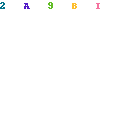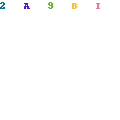History
Itatiaia National Park is the first and so also the oldest National Park of Brazil. It was inaugurated in 1937 and covers almost 30.000 hectares of the
larger Environmental Protection Area of the Mantiqueira mountain range.
Getting there from Rio de Janeiro is a +/- 200 km drive via the BR116 (Rio – São Paulo). The distance from São Paulo is about 250 Km. I’m
lucky to live in Volta Redonda, which is only 80km from the park.
How to get there?
Coming from Rio de Janeiro, Follow the BR116 (Dutra) and take the exit for Itatiaia, right after the “Graal” restaurant. Follow the indications to the National park and you arrive at the gate… The entrance fee is 11R$ per person (about 7 Usd).
You don’t have pay for the car. They will give you a badge that you need to return upon exiting the park. They want to make sure that everybody is accounted for.
Once inside the park, you just follow the road, which climbs steadily to an altitude of about 1.100m. After about 4km there’s a visitor’s center/museum, where you can see the history of the creation of the park, old photos and an interesting exposition about all the plants and animals in the park.Interesting, but not surprising, to find out that there are even Pumas (Onça Parda) in these forests.
Near the center, you can stretch your legs for a short 15-20 minute hike, descending to the “Lago azul” Once past the visitor’s center, you can continue following the road until reaching a bridge over the Campo Belo river, which is the end of the line for your car.
From that point you can start a few short hikes to see the various waterfalls in the area, or the longer ones (20-30km) into the higher parts of the park.
If you only have a day or afternoon, it’s advisable to do only the short hikes. The longer ones are serious hikes and require equipment, food and water, since you would be spending the night in one of the shelters higher up in the mountains.
We were only there for the day, so we stuck to the “easy” stuff ![]()
The trails in the lower part of the park are rocky and sometimes pretty steep, but well maintained and safety equipment is in place. In some parts there are stairways to make the climb easier.
Food.
After seeing the Veu da Noiva and Itaporani waterfalls, and the Piscina da Maromba, it was time for some lunch.Don’t worry if you didn’t bring any food yourself, because the park is home to a restaurant, not far from the parking near the piscina da Maromba.
At 40R$ (about 26 Usd) per person (without drinks and tip of 10%) it is certainly not cheap. Ok, it’s “all you can eat”, but seriously, I can buy veggies for a whole week for that kind of money. Anyways, at least the food was delicious and it is one of the first times that I had 3 courses in a restaurant in Brazil, including dessert.
One thing I never saw a restaurant doing before, was that after making the tab, the waiter told me that he would write the price INCLUSIVE a 10% markup on the back of the note, and that I was “free to pay that extra 10% if I thought that the service was good”… OK, the service wasn’t bad at all, but this restaurant already charged “tourist” prices, which I found extremely high, so I took the liberty of not paying the extra 10%. I still paid almost double of what a comparable lunch in a “non-touristic” restaurant would cost.
Birds

This little guy came sitting right beside me to have his picture taken. It was one of the most colorful birds around there, and is known in Brazil as "Saira de Sete cores" - Do yo see the seven colors?
The great thing about this restaurant though, wasn’t the food, but the fact that they had a few bird feeders hanging just outside near the deck, and it was a coming and going of the most colorful birds I had ever seen (outside of a zoo that is).
I know that at this point I’m supposed to start proclaiming a list with the names of all the birds I saw there, but I’m everything but an ornithologist, so I can just tell you that I saw various species of hummingbirds (also known as Colibris in Belgium and “Beija-flor” in Brazil), very colorful little birds called “saira de sete cores” (7 colored Saira) and other ones, one of which I’m pretty sure was a woodpecker (in the colors of the Belgian – or German – flag)
It was the first time ever that I tried to take pictures of hummingbirds in flight and I have to tell you… It ain’t easy. These guys are so fast that, by the time your autofocus did its job and you press the button, you end up with a picture of the feeder, but no bird ![]() I probably spent half an hour taking picture after picture, but in the end I did go home with a few decent ones (all lucky shots of course.
I probably spent half an hour taking picture after picture, but in the end I did go home with a few decent ones (all lucky shots of course.
Besides the birds, there were a few other animals we had the honor of spotting. There were squirrels, monkeys, butterflies, some crawling creatures like lizards and centipedes, but unfortunately (or luckily, just the way you look at it) we didn’t see a puma.
All in all, the Itatiaia National park is a great place to visit for anyone who wants to get a feel of the Atlantic Rainforest. It gives you an idea about what most of the south-east and south of Brazil must have been like before the “smartest species on the planet” started to destroy it.

For a more complete set of pictures, take a look at my set on Flickr (27 Photos)





Comments